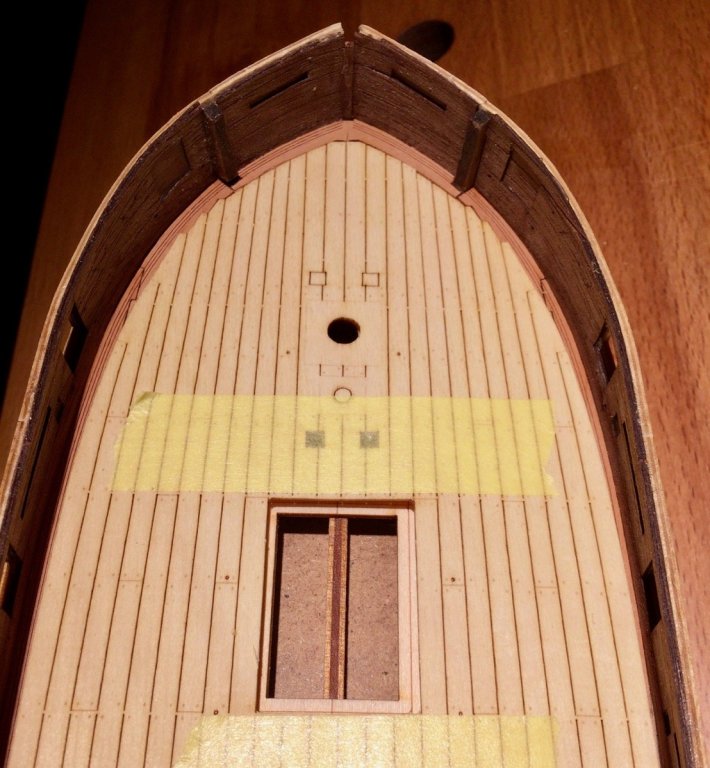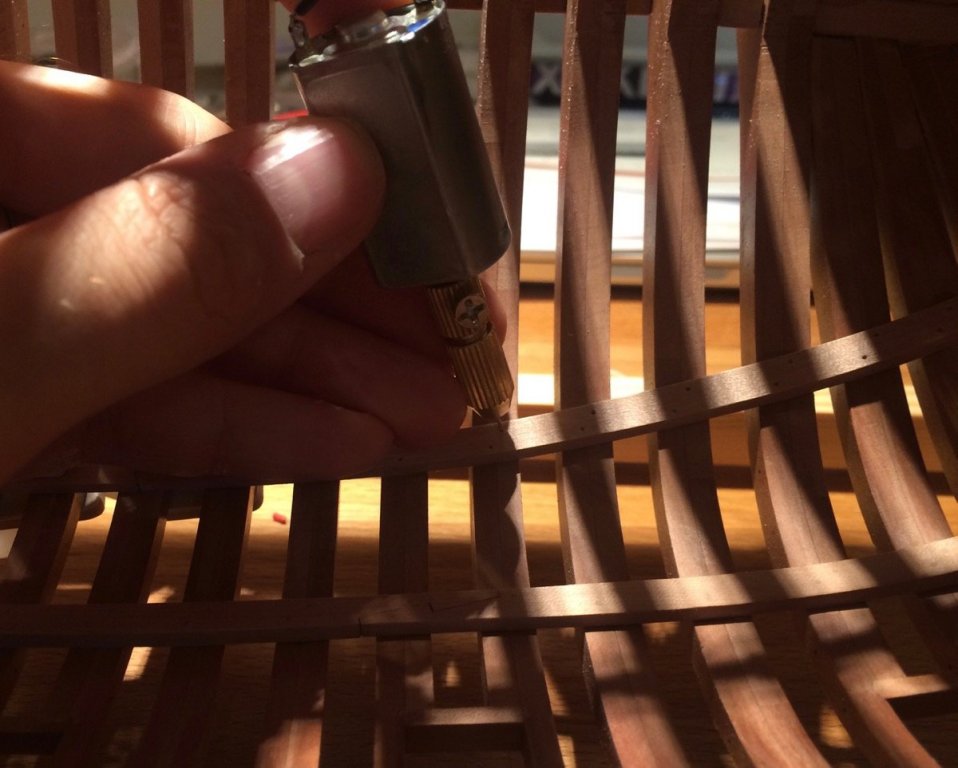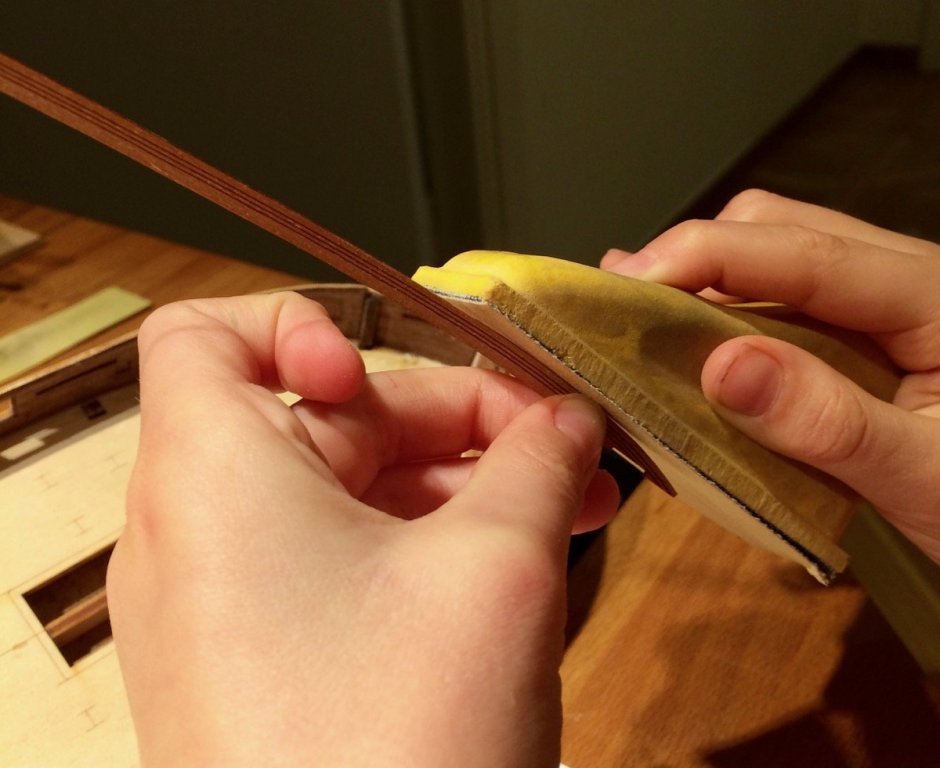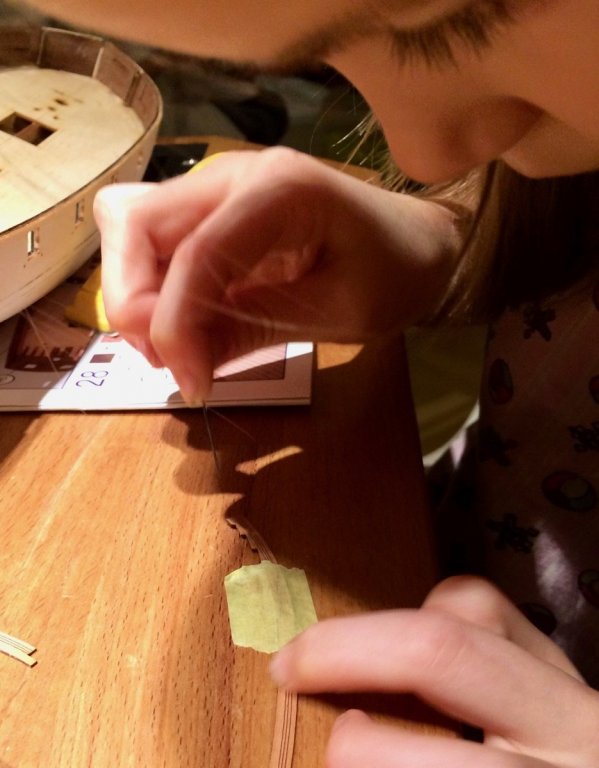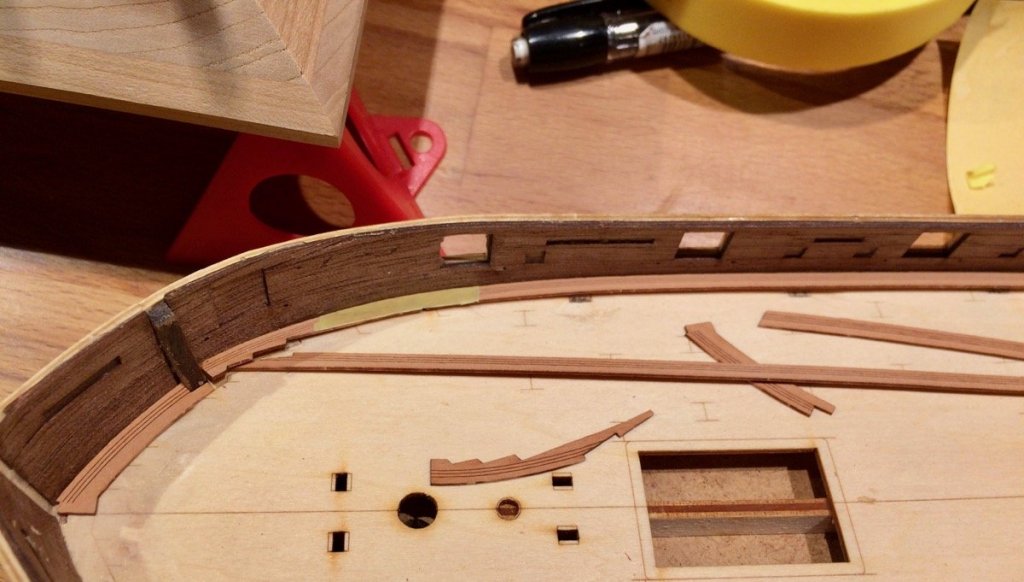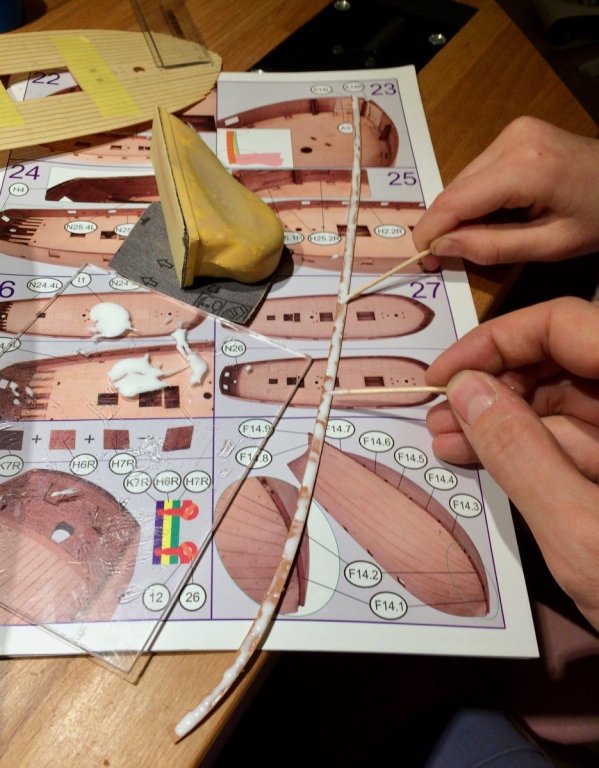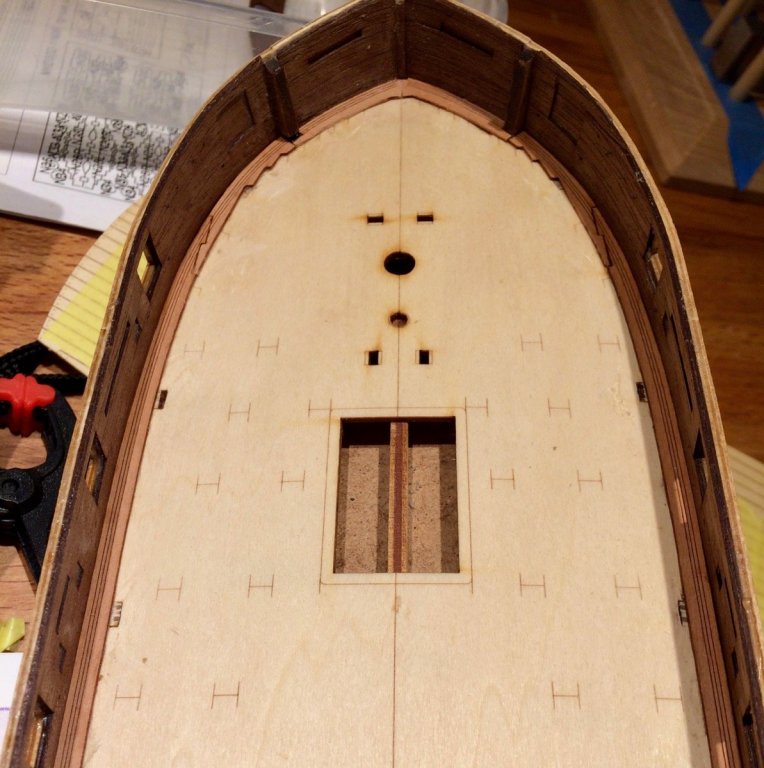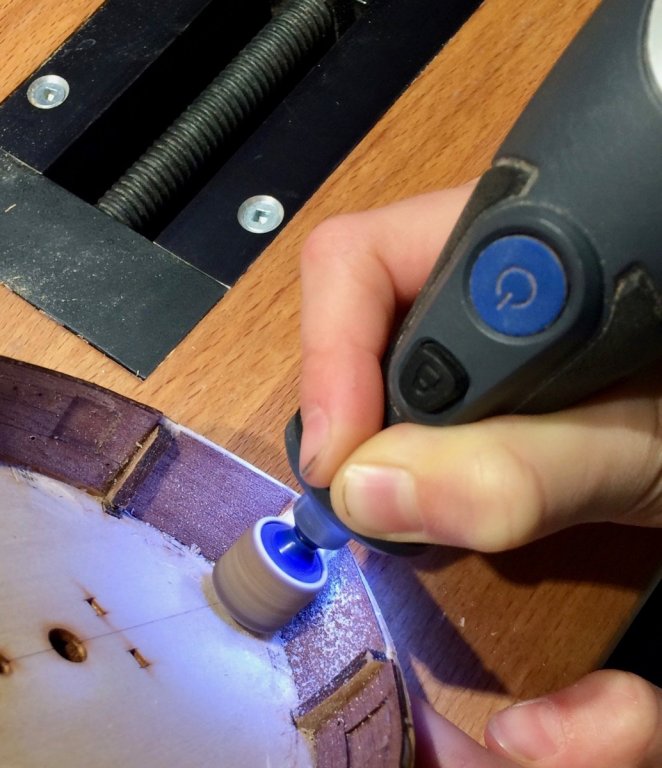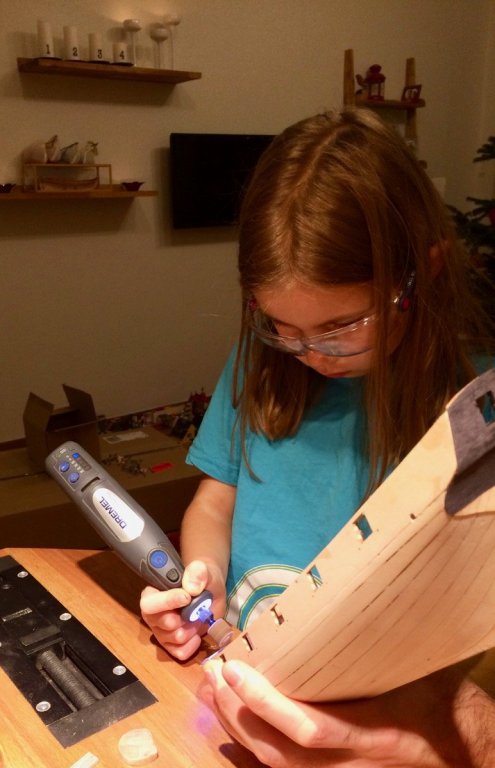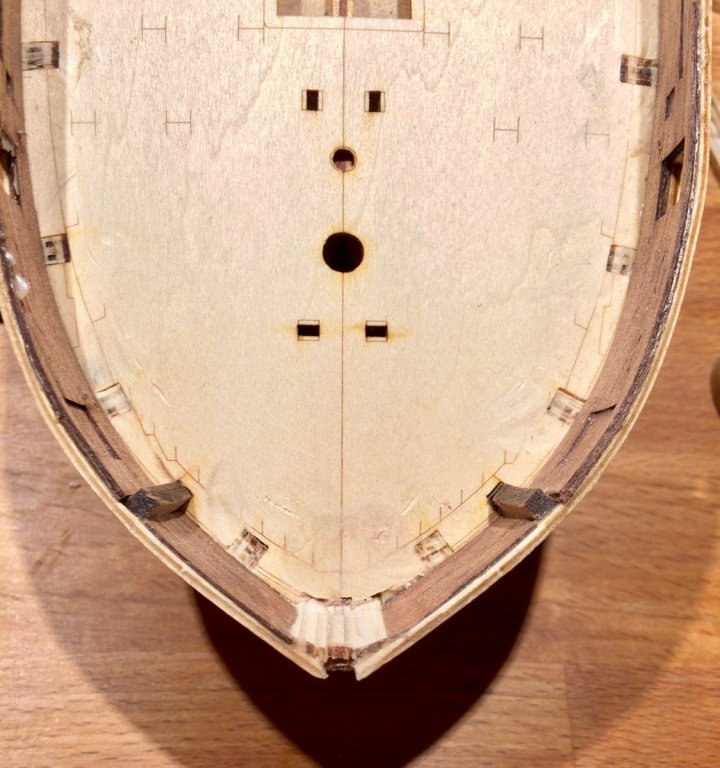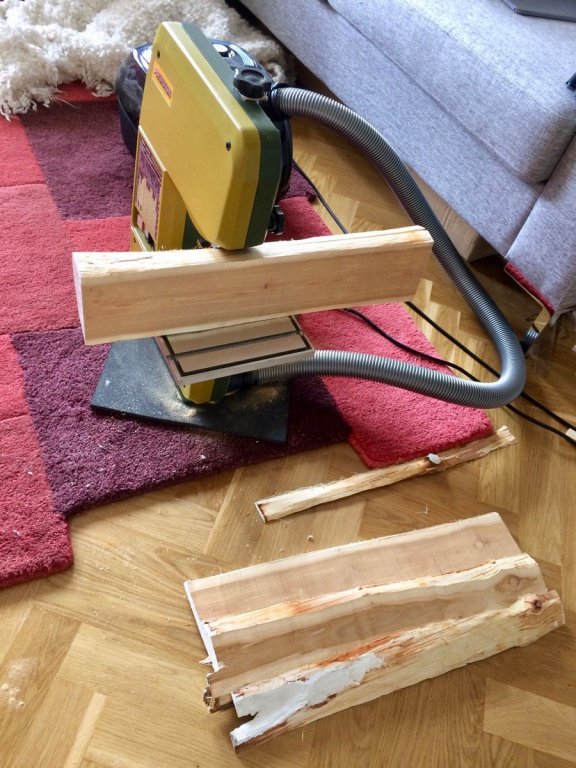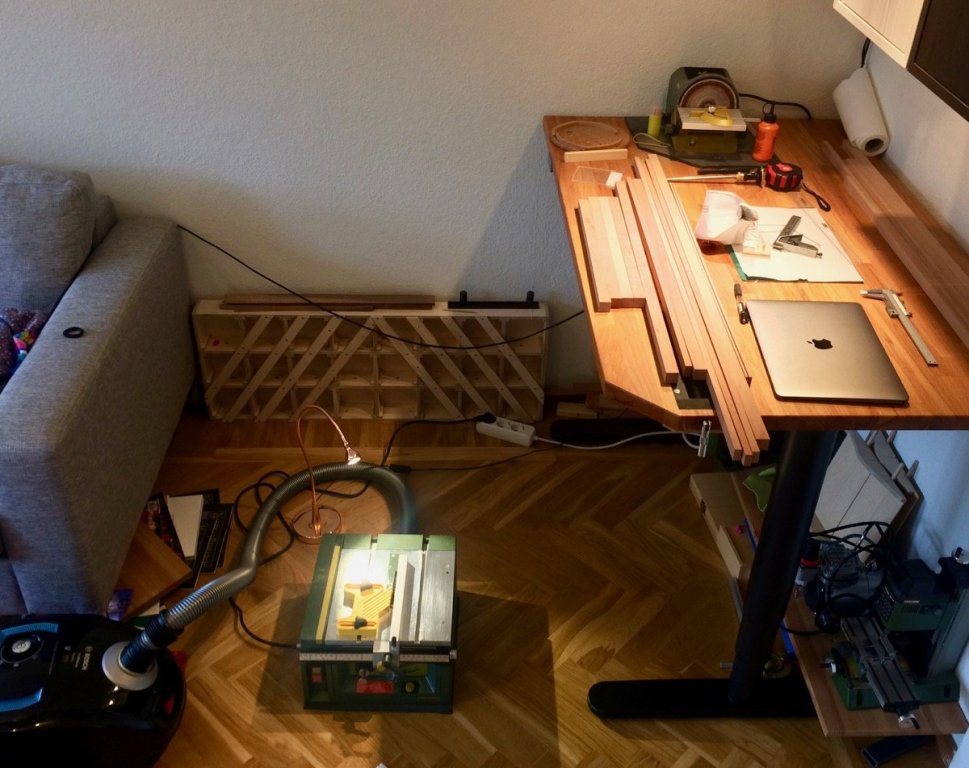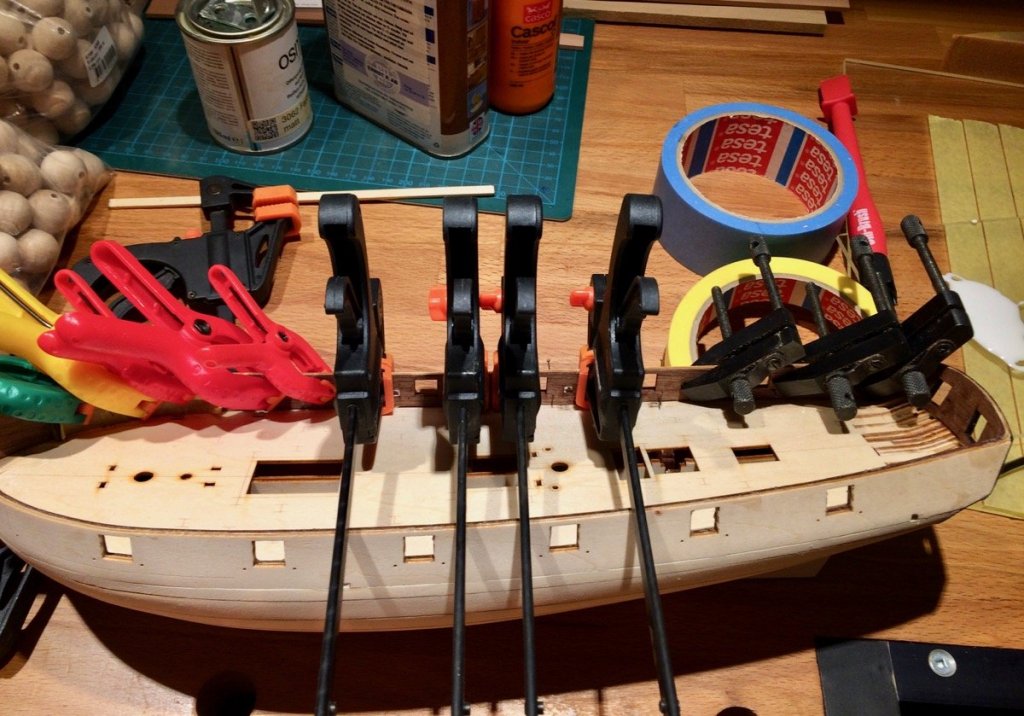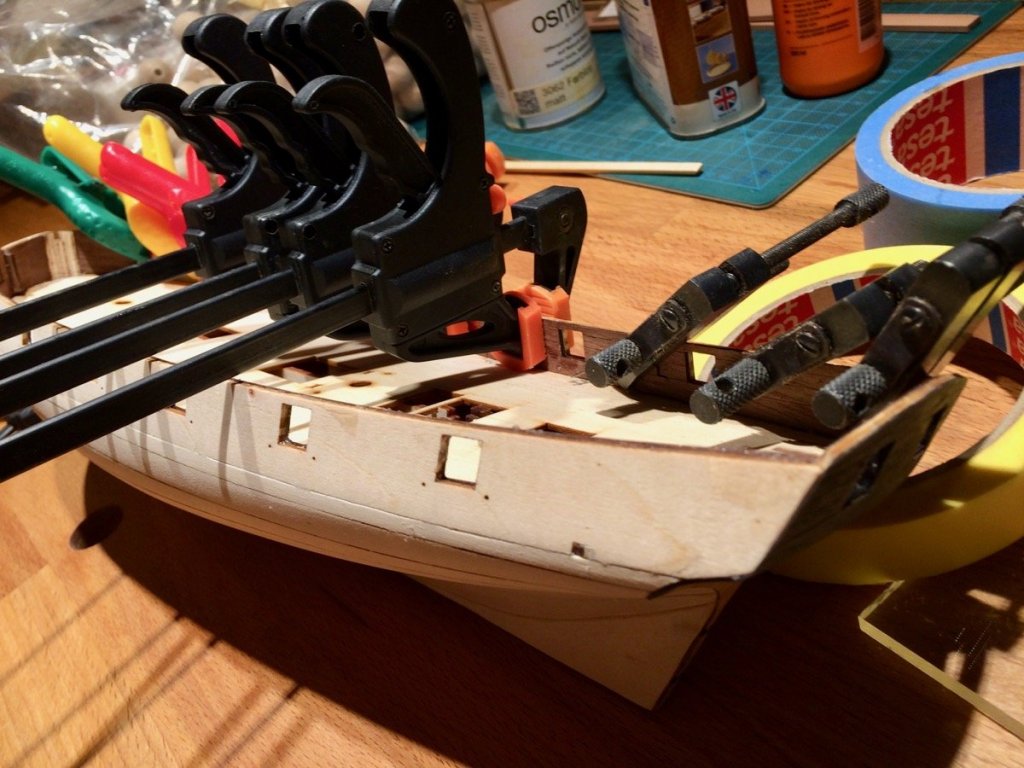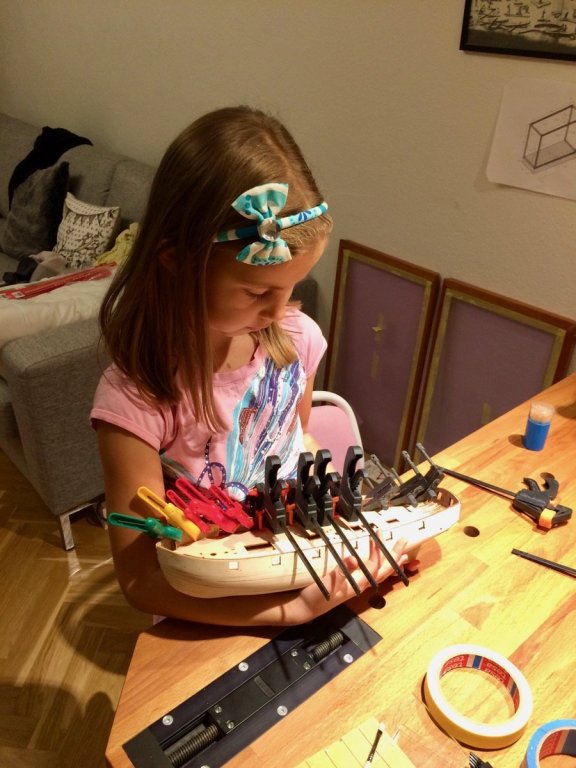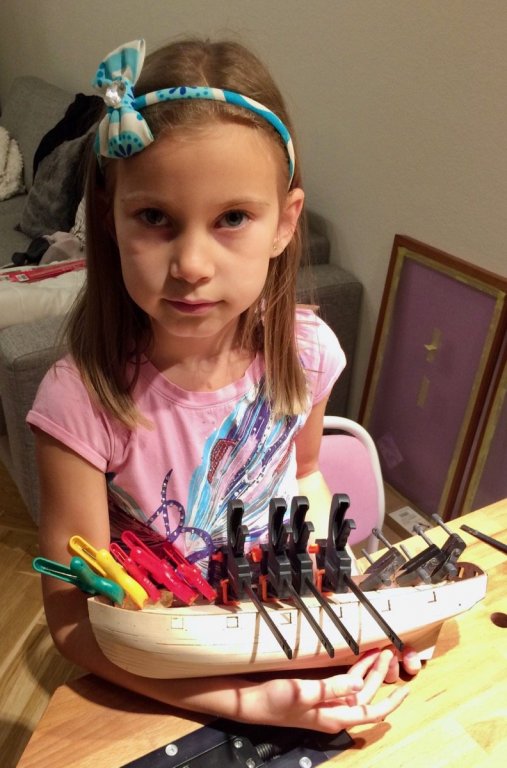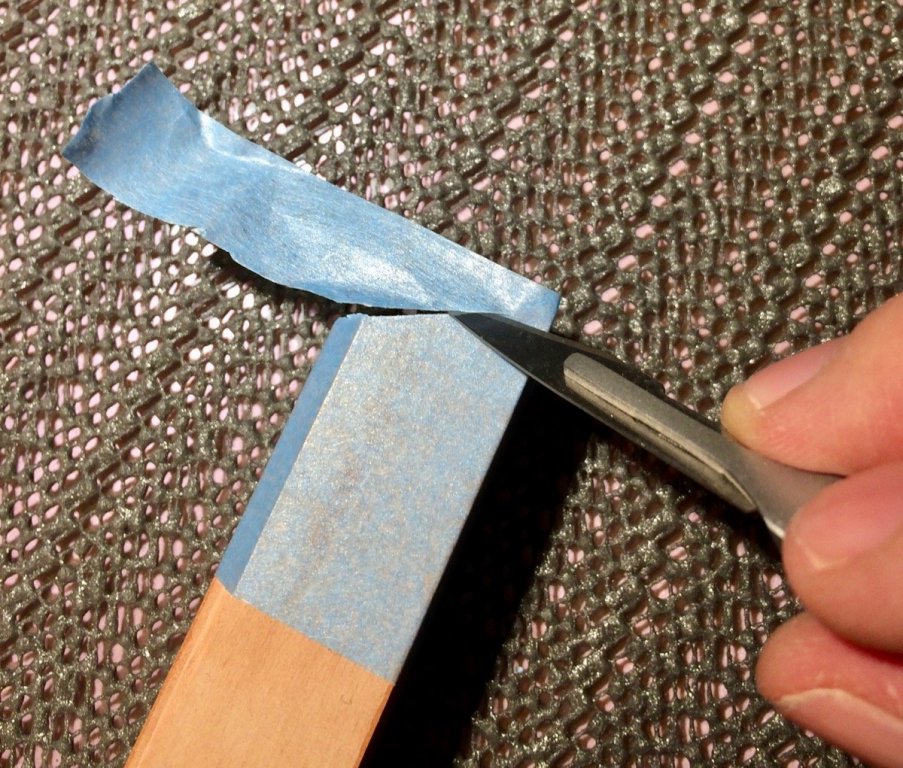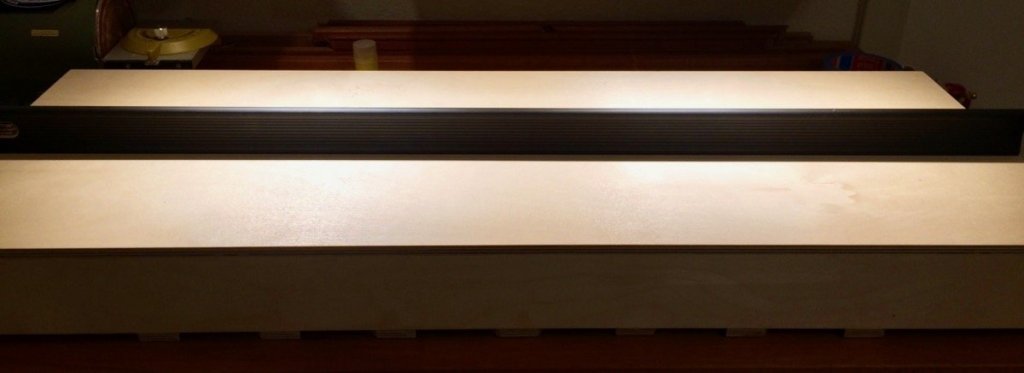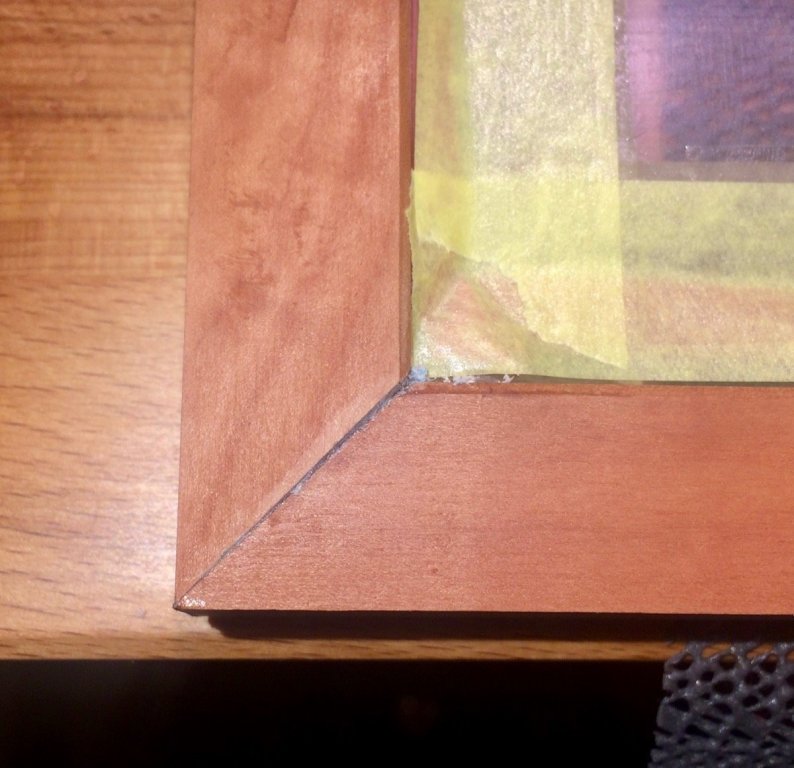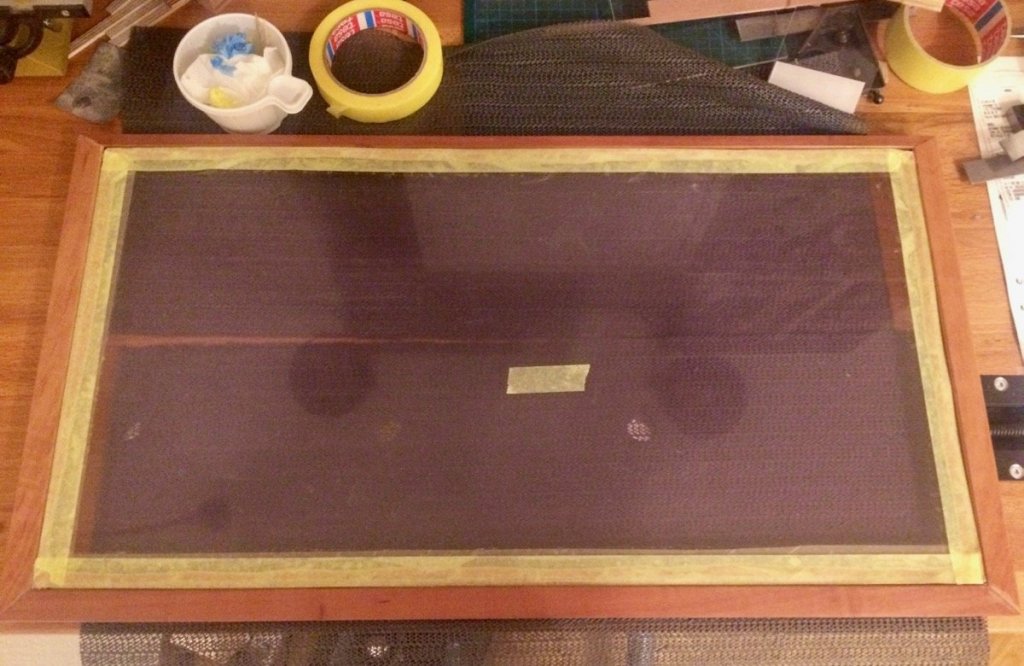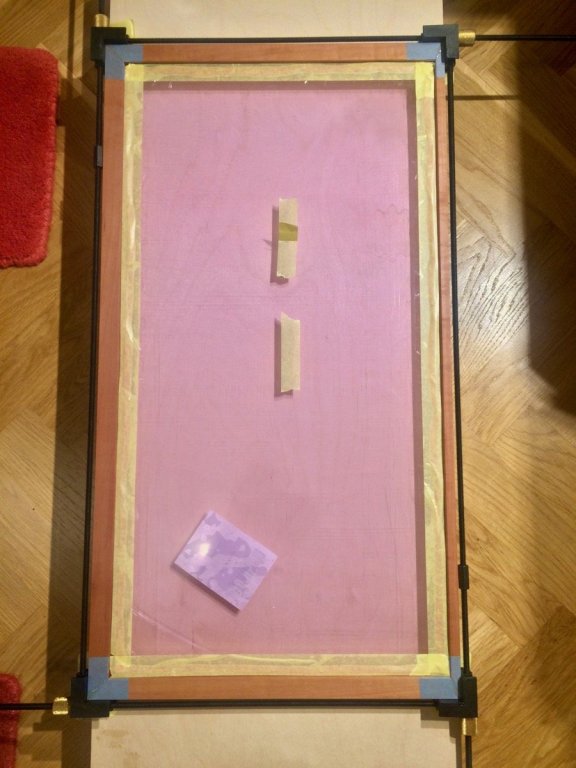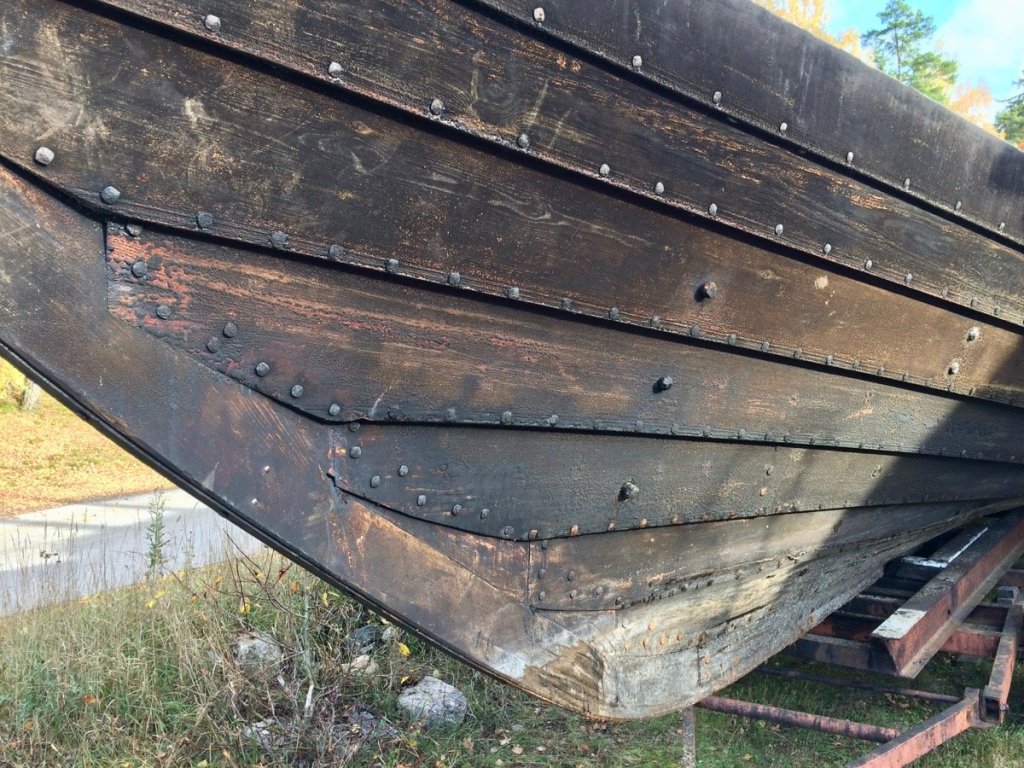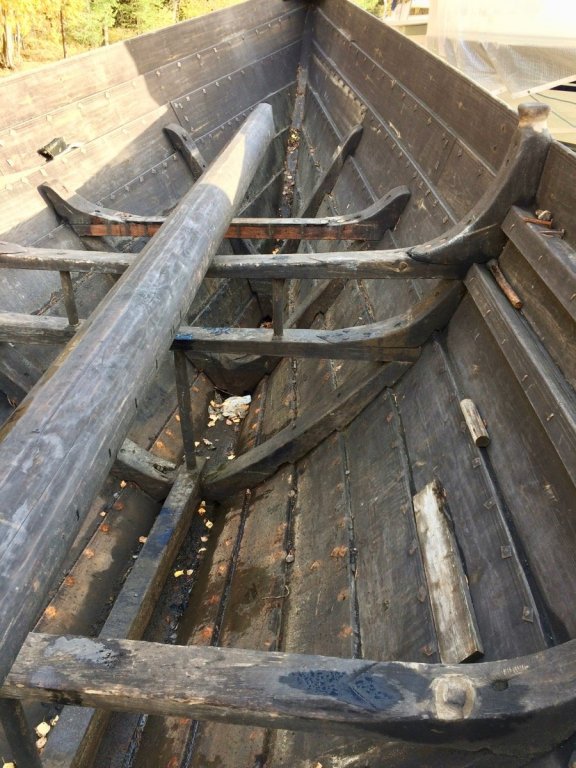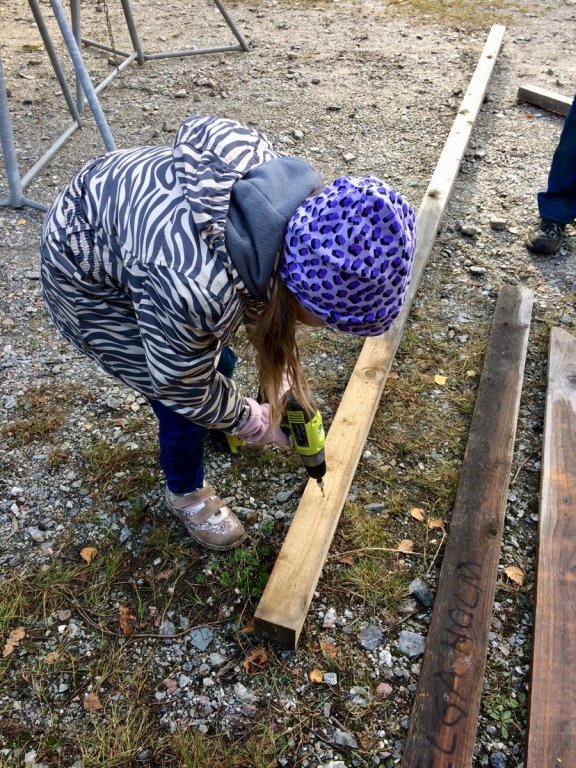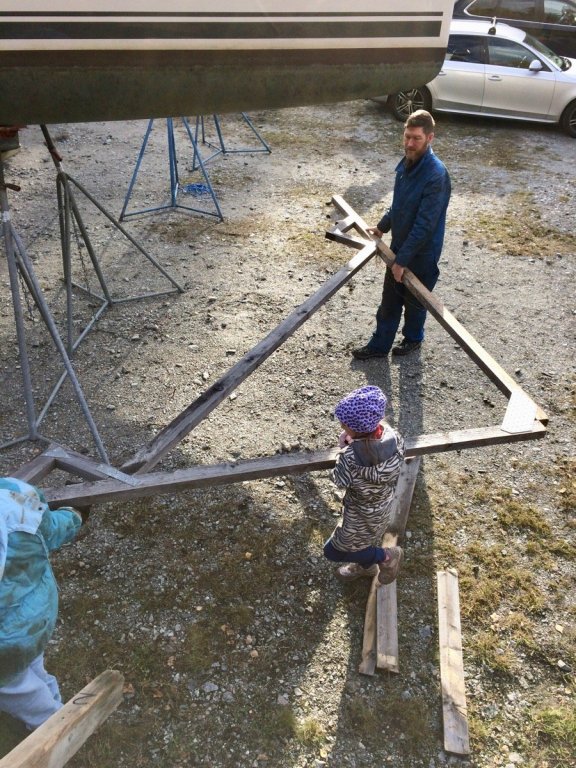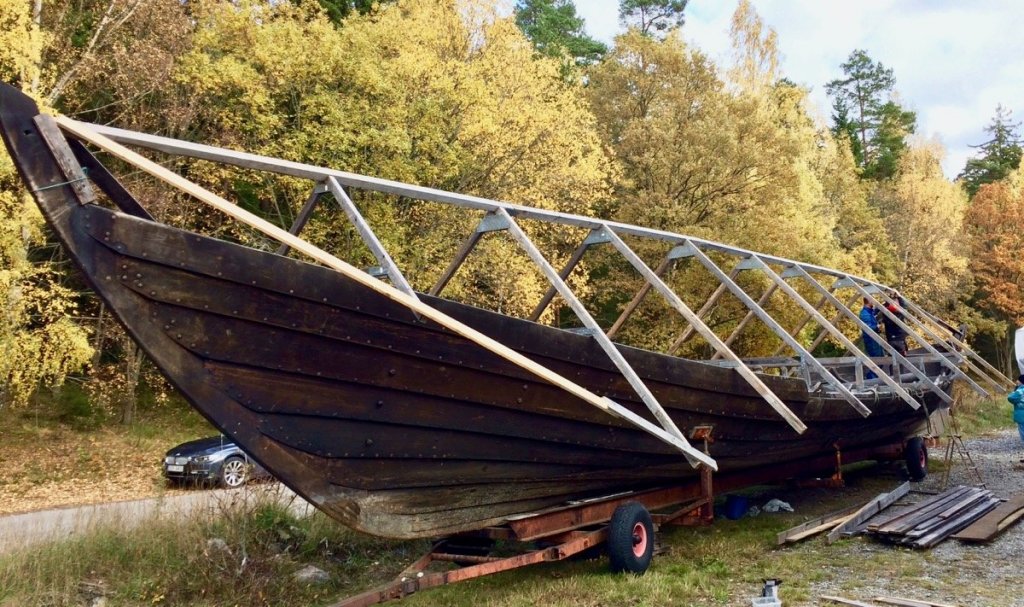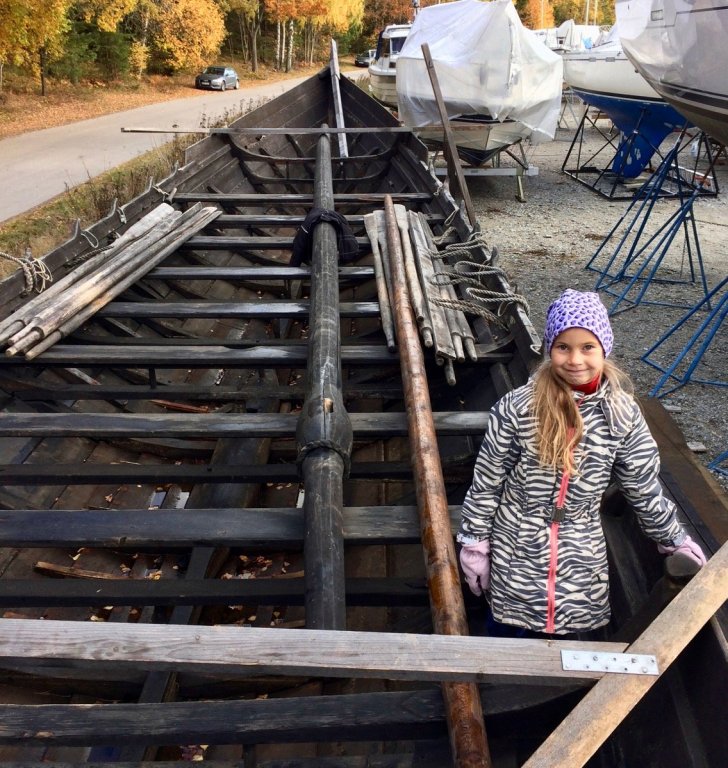-
Posts
1,543 -
Joined
-
Last visited
Content Type
Profiles
Forums
Gallery
Events
Everything posted by Mike Y
-
Lou, the deck is pre-cut, with individual planks cut off, but the entire deck is still tied together by few connecting tabs. Out of the box it also have a pretty consistent gaps between the planks that should look nice. The planks are actually separated, these lines are cut all the way through the wood (very thin wood though): Kit designer made a really nice thing - you can disassemble the deck and glue each plank individually, or you can just treat it as one big part, gluing the entire deck in one go. We will try to do exactly that, the end result will be better and the satisfaction would be higher. Daria will need to show a lot of patience to fine fit the deck so it sits without any gaps, and this patience would be rewarded by a beautiful deck in one go. Otherwise it will take at least a few months, and the result would not be as good (spacing, alignment, glue squeezing out, etc).
-
Thanks for the comments! The scarf joints were already laser cut in the kit, so we just managed to not break them Mumin, ha, that is a nice catch! Hard to imagine how these could be used for forming, considering the curved shape. Anyway, they look interesting enough comparing to the other side, which is just plain and have no "notches".
-
Amalio, are you applying any finish? Oil? Varnish? It looks like a natural wood!
-
This pen drill is nice, but still too long for confined spaces (like inside the hull). Is there anything better than this ugly hack I was forced to make using the cheapest parts available? I am pretty sure that there are smaller motors available, and batteries could be wrapped around it, keeping the body short.
-
Sharpening with MK !! Narrow Blade Honing Guide
Mike Y replied to ChrisLBren's topic in Modeling tools and Workshop Equipment
Would be probably easier to keep them on the angle that they already have from the factory (since these are fancy chisels, chances are they are properly sharpened already), adding a secondary bevel of 2 degrees or so. Changing the angle will require to remove a lot of material, and the reason is unclear -
Heh, thanks for the comments, she is blushing as usual So far the nail polish does not prevent her from building, so hope these two aspects will co-exist later in her life. You never know until you try! Toady we worked on some really fiddly bits - "waterways" made of super thin veneer. The kit have some truly impressive laser cut details (even scarf joints are represented, and the deck planking is quite realistic), but the details are sooo thin.. There was some "sanding to fit" and removing the laser cut tabs. None of the parts got broken! Fixing the scarf joint with a masking tape, cutting off unnecessary tape with xacto blade: Fiddly bits prepared for glue-up: Gluing together - extra pair of hands if very helpful, we can apply twice the amount of glue before it starts to dry! Waterways in place. Next is the deck that should be sanded to fit between those:
-
The progress is very slow - we are making lots of Christmas gifts, this year more or less nothing is bought in stores (apart from materials and components for the gifts). But there is some quality increase - Daria insisted that I let her use Dremel (sanding drum mode), and proved that she is capable of controlling it with a steady hand. I was so proud! It was a fairing of an inside curve, not a very easy thing to do, requires accuracy. She did it perfectly, I am a happy dad Dremel Micro is very balanced, so even a child can control it without a lot of efforts. The end result looks pretty ok:
-
Hobbyzone building slip for wooden ship models
Mike Y replied to aydingocer's topic in Modeling tools and Workshop Equipment
The theory sounds plausible, considering that the jig is designed and/or produced in Poland -
How serious do you get about dust protection
Mike Y replied to bigcreekdad's topic in Modeling tools and Workshop Equipment
Hmm, the downdraft table sounds like a great idea! Thanks Rusty, off to make some sketches, will try to integrate it into my table top. Be right back! -
Black tissue paper, perforated with a sharp blade for better glue penetration and reinforced with boxwood treenails worked fine for me, no joints ever came apart (and I did some tests, could not break them by hand). But without perforation and/or treenails it would be really weak indeed. Nice to see you finally making sawdust!
-
How serious do you get about dust protection
Mike Y replied to bigcreekdad's topic in Modeling tools and Workshop Equipment
Taking it very seriously - sometimes I was getting a sour throat and some coughing after sanding pear. Plus a layer of fine dust around the "workshop" (which is in the corner of the living room). Being in the corner also means that the airflow and natural ventilation is quite bad. During a summer I am trying to sand on a balcony, but that is not always possible. So I started using medium level respirator masks, they do make a difference: http://www.axminster.co.uk/jsp-typhoon-fold-flat-valved-respirators-ax956169 But then I also bought a vac. Not a shop vac (these beasts are ungodly loud, my neighbours will be really upset), but a decent household grade vac with a "silence" in its name: https://www.clasohlson.com/se/Dammsugare-Bosch-GL-40-ProSilence-BGL4SIL69D/44-1868 To make sure that neighbours are not disturbed - I typically put it on an anti-vibration rubber mat. It works great! The power is more than enough for all my tools, and I rarely crank it up to maximum (because of the noise when the airflow goes through a small dust port in some proxxon tools). It typically runs on some medium speed. After a year of active use, there is no sign of dust getting inside the vac mechanisms - it is clean as new, everything is trapped in a bag and HEPA filter. The bag lasts for quite a long time - most of the volume is taken by shavings from planer or hand planing, and these I usually swipe away and vaccuum what's left. The main job if the vac is to capture a fine dust that would otherwise end up everywhere in the room and inside your lungs. So far I only used three bags, which is nothing. Since it is quiet - I always use it while sanding, just placing the vac hose next to the piece. The airflow is very good, and all that nasty tiny particles are sucked right in. This year I was also doing a lot of small-scale woodworking, cutting a lot of wood on a maximum capacity of my tools. That produced way more dust then cutting tiny bits for the model. And the vac shows no sign of issues. Also I forgot the last time I wiped the dust from the surfaces around the table. There is no fine dust in the air anymore. So do we really need a shop vac, if we are talking about ship modelling? Sounds more like a tradition, or a bad experience with cheap vacs that overheat and die after 30min of running. Modern household vacs are doing the same job, while being smaller and way quieter. -
What brand of #11 blades do you use
Mike Y replied to bigcreekdad's topic in Modeling tools and Workshop Equipment
Switched to scalpel blades for cutting based on multiple advices on MSW, and never look back. Though Excel blade #10 is just perfect for scraping! Just the right profile and stiffness. Lasts forever for scraping, no nicks. I have a feeling that after scraping in one direction there is a burr on the edge of the blade - then you just scrape in another direction and it works great Alternating directions also moves the burr from one side to another. -
As a living room modeller I would say - Proxxon bandsaw. It is very thin and flat, so does not take a lot of space under the table. And is totally capable of sharp turns, enough for frames and such. Scroll saws are much wider, so take more space. I also tried a small proxxon scroll saw - it is terrible, cuts pear 10x slower than the bandsaw, and with awful vibrations.
-
Eric, I understand what you mean! Stockholm has quite a number of old wooden ships, but getting into the right group of enthusiasts is not easy. Daria is now a master of clamps! It is one of her favourite parts of the build process. She struggles with parallel machinist-style clamps, but quickly installs more traditional clamps. Which is really valuable when the glue dries and the strip is long. From now on, she is also the one taking photos, so you can see the model from her angle. The build is in a pretty repetitive phase - gluing thin veneer. It is double layered in many places, so the visual progress is very slow. And we only have enough clamps for one piece at a time.
-
All parts of the case are finished, so starting the glue-up, side panes first. First thing to do is to find a flat surface to glue on, since the sides are too flexible (both wood and plexiglas) to be rigid. My workbench is not flat enough (beech wood it is made of swells a lot with humidity, leading to warpage), but luckily the case base is dead flat and stable, since it is a torsion box. Checked with the straight edge: Then I need to mask every part with blue tape, to reduce the mess after epoxy. For that I did a number of trials with different types of masking tape available locally, to find the one that leaks the less (epoxy can leak under some tapes). Scalpel is used to cut it just enough to let epoxy get out and avoid trapping it in the joint: The rest is a time race: 1) Apply a bit of epoxy to all future joints (8 surfaces). They are all endgrain-to-endgrain (well, diagonal grain), so needs to pre-absorb some epoxy, otherwise the glue joint would be weak when real epoxy would be sucked into the grain. 2) Plexiglas is attached to the wood with a silicone glue, so every groove need to get a continuous line of it. (4 grooves) 3) Carefully insert the glass without moving it too much to avoid messy silicone glue squeeze-out. 4) Connect joints together, applying thick epoxy to it as you go. 5) Align everything, check squareness 6) Clamp and re-check again. It was not so easy to keep track of all that, especially with a 10-15min working time for both glues. Epoxy gets out to the masking tape, but all the mess stays on it: So the first side ended up so-so, with some joints having gaps. But this side would be less visible than the other, so should be ok. Full view: After a full assembly, I will scrape and sand all jonts to make sure they are nice and flush. Second side window was much smoother, all joints look tight with no gaps. I have big hopes for that second side The moment of truth is coming - joining these sides together with a top glass and front frame. Really hope that I will not need to scrap the entire thing and start over...
- 967 replies
-
- hahn
- oliver cromwell
-
(and 1 more)
Tagged with:
-
Thanks, she is happy to read it! Today we took part in another build (or a maintenance of an already built "model"). It is Helga Holm, the Viking ship replica, built in 1983, 22m long, weighs 4 tons. It is in a decent shape, but definitely requires some repair. For now the goal was to raise a tarp cover to protect it from elements in the winter. Daria participated a lot, and she looks forward to sail it in the summer! Ready to be covered:
About us
Modelshipworld - Advancing Ship Modeling through Research
SSL Secured
Your security is important for us so this Website is SSL-Secured
NRG Mailing Address
Nautical Research Guild
237 South Lincoln Street
Westmont IL, 60559-1917
Model Ship World ® and the MSW logo are Registered Trademarks, and belong to the Nautical Research Guild (United States Patent and Trademark Office: No. 6,929,264 & No. 6,929,274, registered Dec. 20, 2022)
Helpful Links
About the NRG
If you enjoy building ship models that are historically accurate as well as beautiful, then The Nautical Research Guild (NRG) is just right for you.
The Guild is a non-profit educational organization whose mission is to “Advance Ship Modeling Through Research”. We provide support to our members in their efforts to raise the quality of their model ships.
The Nautical Research Guild has published our world-renowned quarterly magazine, The Nautical Research Journal, since 1955. The pages of the Journal are full of articles by accomplished ship modelers who show you how they create those exquisite details on their models, and by maritime historians who show you the correct details to build. The Journal is available in both print and digital editions. Go to the NRG web site (www.thenrg.org) to download a complimentary digital copy of the Journal. The NRG also publishes plan sets, books and compilations of back issues of the Journal and the former Ships in Scale and Model Ship Builder magazines.



